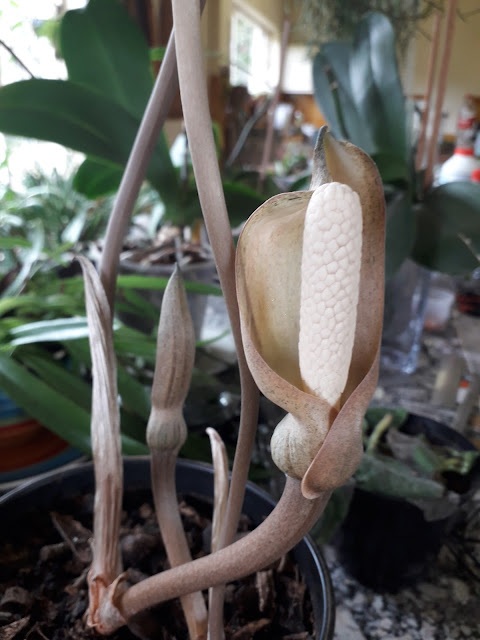This striking fern Microsorum scolopendria will very soon be noticed on entering into the eMalangeni forest, with its shining lush green leaves it is hard to not notice. In addition Microsorum scolopendria is one of the most numerous plants on the forest floor often forming extensive patches and occasionally up into the trees.
Microsorum scolopendria is known locally as umlalamvubu commonly called wart fern in English
Distribution
This magnificent forest fern which is a favorite of mine was formerly known as Phymatodes scolopendria, does not only grow in the eMalangeni Forest it is widespread in the Old World, occurring from Africa and Madagascar to Asia and Australia, as well as throughout Polynesia.
In Africa umlalamvubu occurs along the east coast of South Africa from as far south as Port St Johns where it occurs mostly in dune forests and dune scrub as well as swamp forest near to the coast. From South Africa its range extends throughout tropical Africa up into West Africa.
Microsorum scolopendria locally known as umlalamvubu, translated as the plants that hippos sleep on
Description
Microsorum scolopendria has a strong widely creeping rhizome up to 10 mm in diameter that mostly occurs on the soil surface.
The deeply pinnatifid, leathery fronds, up to 0.9 m long, are widely spaced along the rhizome. The leaf stalk is up to 400 mm long. The leaf blade is divided into narrowly oblong lobes, up to 220 x 30 mm.
The deeply pinnatifid, leathery fronds of umlalamvubu Microsorum scolopendria
The somewhat sunken sori are round to oval, 2 to 3 mm in diameter and occur in one or two rows on either side of the costa. Adaxially the sori are embossed.
The sunken sori on the underside of the leaf of Microsorum scolopendria
Microsorum scolopendria crawls along the ground to form an extensive ground cover in places, but will also climb up tree trunks at times.
Ethnobotanical uses
locally umlalamvubu is used by herbalists to treat abscesses for which a paste of ground leaves is mixed with earth from a wasp's nest before being applied. Umlalamvubu is also used to dress wounds where leaf pulp is used as a dressing, as well as to treat insanity, where leaves are ground then mixed with water and the liquid drunk.
Uses Singapore
The crushed Fronds of Microsorum scolopendria which contain coumarin a fragrant colorless crystalline solid with a sweet odor resembling the scent of vanilla are used to perfume clothes as well as coconut oil.
Uses in Hawaii
When crushed, the fern issues a scent similar to the fragrant maile plant, Alyxia stellata which is used in making traditional leis. Sometimes, pieces of the fern are interlaced into leis because of their fragrance. Microsorum scolopendria is also one of the plants used for scenting kapa fabric.
When crushed, the leaves of the fern Microsorum scolopendria issues a fragrant scent similar to vanilla
Cultivation
Microsorum scolopendria is a hardy species that is often used in landscape design in shady areas and for indoor landscapes. Microsorum scolopendria is easy to cultivate and grows in a wide range of habitats. Microsorum scolopendria when grown outdoors it grows best in light shade, but it will also tolerate direct sunlight for part of the day. In older gardens it often establishes on brick or stone walls, or on trees, especially palms. Although it will tolerate short dry spells it is best kept well watered.
Microsorum scolopendria makes and excellent indoor pot plant.
When grown in hanging baskets the creeping rhizome droop gracefully down from the basket.
This magnificent fern warrants being planted far more often in landscapes and gardens in the areas in KwaZulu-Natal where it grows.
Guided excursions
Please join us on one of our many guided excursions conducted in Zulu, English or German into the eMalangeni Forest, Kosi Bay area, Tembe Elephant Park the home of the world largest elephants and other surrounding natural areas. Please visit one of my websites for my contact details.
Michael Hickman
18.04.21
Please visit my websites at
as well as my other blogs at
http://luthulienvironment.blogspot.com/
http://ecomandurban.blogspot.com/
















No comments:
Post a Comment